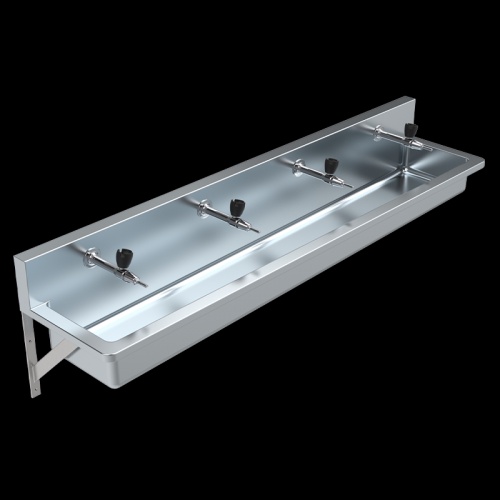In the pursuit of creating eco-friendly and sustainable environments, schools play a pivotal role. From curriculum integration to waste management practices, every aspect of a school's operations can contribute to a greener future. One often overlooked yet crucial element in this journey towards sustainability is the choice of infrastructure and facilities within the school premises. In particular, stainless-steel troughs stand out as a sustainable choice that can significantly impact environmental conservation efforts.
Durability and Longevity
One of the key attributes of stainless steel troughs is their exceptional durability and longevity. Unlike traditional materials such as plastic or ceramics, stainless steel is highly resistant to corrosion, rust, and wear. This durability ensures that stainless steel troughs can withstand the rigors of daily use in high-traffic areas like school restrooms or outdoor facilities without deteriorating or requiring frequent replacements. By choosing long-lasting infrastructure, schools reduce the need for resource-intensive manufacturing processes and minimize waste generation, contributing to a more sustainable ecosystem.
Hygienic and Easy to Maintain
Maintaining cleanliness and hygiene is paramount in any educational institution. Stainless steel troughs offer a hygienic solution due to their non-porous surface, which resists bacterial growth and is easy to clean and disinfect. With proper maintenance protocols in place, stainless steel troughs in school restrooms promote a healthier environment for students, staff, and visitors. Additionally, the ease of maintenance reduces the use of harsh cleaning chemicals, further minimizing the environmental impact and ensuring a safe and sustainable learning environment.
Water Conservation
Water scarcity is a global concern, and schools have a responsibility to promote responsible water usage. Stainless steel troughs can be designed with water-saving features such as low-flow faucets, automatic shut-off valves, and sensor-activated controls. These features help conserve water by minimizing wastage during handwashing and other activities. By encouraging water conservation practices through infrastructure choices, schools instill valuable lessons about resource stewardship among students and foster a culture of sustainability.
Recyclability and Eco-Friendly Manufacturing
Stainless steel is inherently recyclable, with a high percentage of recycled content used in its production. Choosing stainless steel troughs means opting for a material that can be recycled at the end of its lifespan, reducing the demand for virgin resources and minimizing waste sent to landfills. Furthermore, the manufacturing process of stainless steel is relatively eco-friendly compared to other materials, with lower energy consumption and emissions. By prioritizing sustainable materials like stainless steel, schools contribute to a circular economy and reduce their environmental footprint.
Versatility and Adaptability
Stainless steel troughs offer versatility and adaptability in design and functionality. They can be customized to suit various applications within schools, from restroom sinks and handwashing stations to outdoor drinking fountains and garden irrigation systems. This versatility allows schools to optimize space utilization, promote outdoor learning experiences, and integrate sustainable practices seamlessly into everyday activities. Whether in traditional classroom settings or outdoor learning environments, stainless steel troughs provide a sustainable solution that aligns with evolving educational needs.
Educational Opportunities
The adoption of stainless steel troughs in schools also presents unique educational opportunities. Teachers can incorporate lessons about sustainable materials, water conservation, and waste reduction into their curriculum, using the infrastructure itself as a tangible example. Students can learn about the life cycle of materials, the importance of responsible consumption, and the role of technology in promoting sustainability. By integrating sustainability education with practical applications, schools empower students to become informed global citizens capable of making environmentally conscious choices.
Community Engagement and Role Modeling
Schools serve as community hubs, and their actions can inspire broader societal changes. By embracing stainless steel troughs and other sustainable practices, schools become role models for environmental stewardship within their communities. Parents, local businesses, and government entities may take note and follow suit, leading to a collective effort towards building more sustainable communities. This ripple effect reinforces the importance of sustainable choices and fosters a culture of shared responsibility for environmental conservation.
Conclusion
The adoption of stainless steel troughs in schools represents a sustainable choice with far-reaching benefits. From durability and hygiene to water conservation and recyclability, stainless steel troughs align with the principles of eco-friendly infrastructure. By integrating these troughs into school facilities, educational institutions not only promote sustainability but also provide valuable learning experiences, engage the community, and set an example for future generations.
As schools continue to prioritize environmental responsibility, stainless steel troughs stand out as a practical and impactful solution towards creating eco-friendly schools and a greener future.


No comments yet